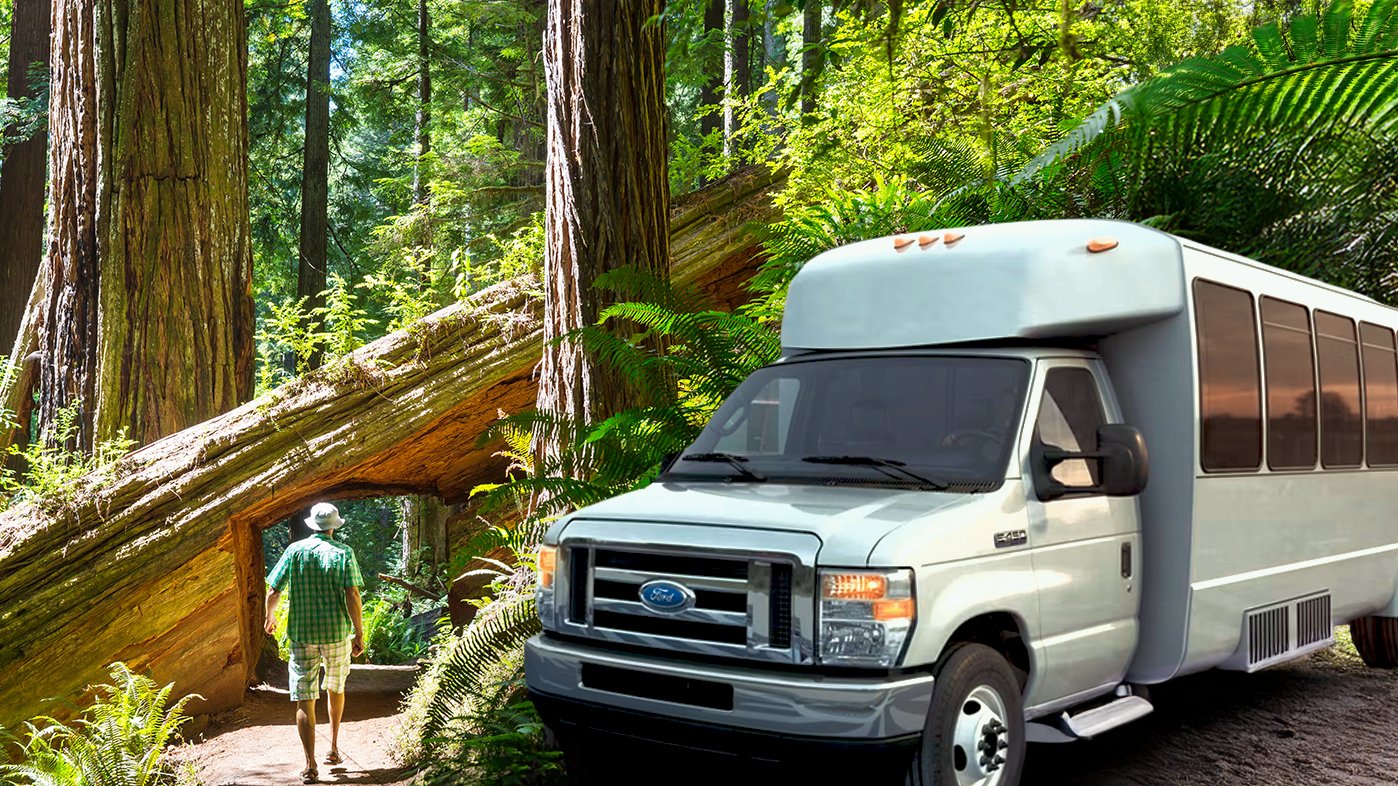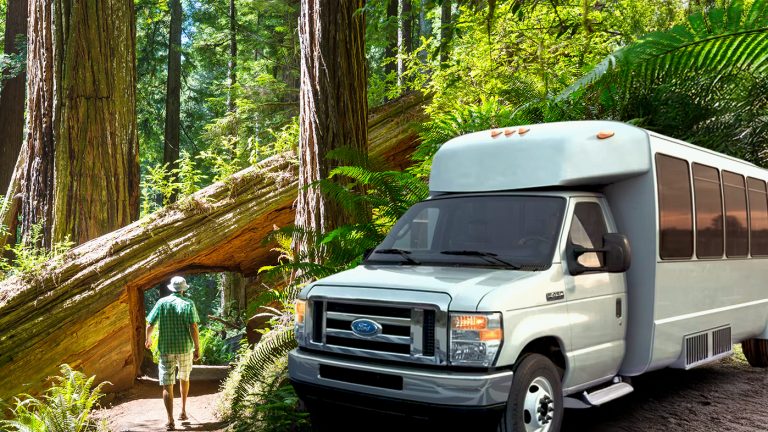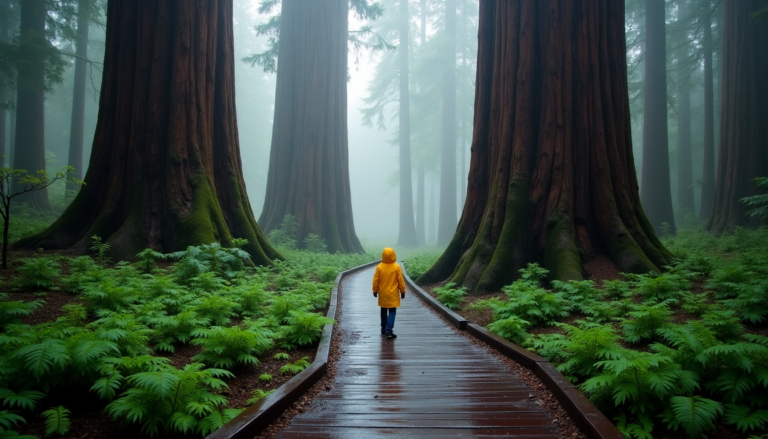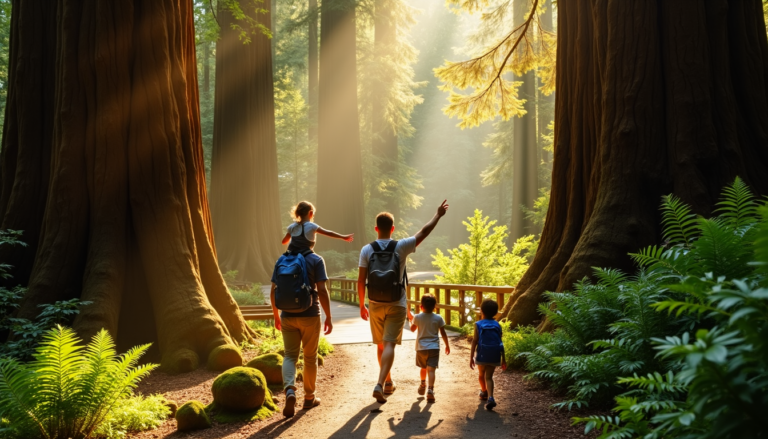Muir Woods photography offers a captivating journey into the heart of nature’s grandeur. Nestled in California’s iconic redwood forest, this national monument presents photographers with awe-inspiring landscapes and unique challenges. Capturing the towering giants and intricate details of this ancient ecosystem requires skill, patience, and the right techniques.
To help you make the most of your photographic adventure, we’ve put together a comprehensive Muir Woods photo guide. We’ll cover the best times to snap pictures, essential gear to bring, composition techniques to showcase the redwoods, and post-processing tips to enhance your images. Whether you’re a seasoned pro or an enthusiastic beginner, these insights will help you find the best photo spots in Muir Woods and create stunning shots that truly capture the magic of this extraordinary place.
Best Times to Photograph Muir Woods
Timing is crucial when it comes to capturing stunning shots in Muir Woods. The right conditions can transform this already breathtaking landscape into a photographer’s paradise. Let’s explore the optimal times to visit and photograph this magnificent redwood forest.
Early Morning Light
Arriving at Muir Woods early in the day offers several advantages for photography. The soft, gentle light of dawn filters through the towering redwoods, creating a magical atmosphere. This early morning glow adds depth and dimension to your images, highlighting the textures of the tree bark and the lush forest floor.
Moreover, visiting early helps you avoid crowds, allowing for unobstructed shots of the majestic trees. You’re more likely to find parking spots in the closest lot, giving you quick access to the trails. As you wander along Redwood Creek, take your time to absorb the tranquil surroundings and look for unique compositions.
Golden Hour Magic
The golden hour, that magical time just before sunset, is a favorite among photographers for good reason. In Muir Woods, this period bathes the forest in warm, golden light, creating a dreamy and enchanting ambiance.
During this time, the sun’s low position in the sky produces long, flattering shadows that add depth to your images. The interplay of light and shadow among the redwoods can result in breathtaking photographs. The golden hour enhances the rich colors of the forest, from the deep reds of the tree trunks to the vibrant greens of the ferns and moss.
To make the most of the golden hour, plan your visit accordingly. Arrive well before sunset to scout locations and set up your shots. Remember, the forest floor can be darker than you expect, so be prepared to adjust your camera settings as needed.
Misty Conditions
One of the most captivating times to photograph Muir Woods is during misty conditions, which often occur in the early morning. The proximity to the Pacific Ocean means the woods are frequently enveloped in a dense fog that usually dissipates by late afternoon.
Misty conditions add an ethereal quality to your photographs, creating a sense of mystery and wonder. The fog softens the harsh contrasts and diffuses the light, resulting in a moody and atmospheric setting. This environment is perfect for capturing silhouettes of the towering redwoods or showcasing the way sunlight streams through the mist-shrouded forest.
To increase your chances of experiencing these magical misty moments, try to visit Muir Woods early in the day, especially during spring or fall when fog is more common. Keep in mind that weather can be unpredictable, so flexibility in your schedule can be beneficial.
Remember, each time of day offers unique opportunities for Muir Woods photography. Whether you’re capturing the first light of dawn, the golden glow of sunset, or the mystical atmosphere of a foggy morning, the key is to embrace the conditions and let the natural beauty of the forest inspire your creativity.
Essential Camera Gear for Redwood Photography
To capture the awe-inspiring beauty of Muir Woods, having the right equipment is crucial. Let’s explore the essential gear that will help you take stunning shots in this majestic redwood forest.
Wide-Angle Lenses
When it comes to Muir Woods photography, wide-angle lenses are a must-have. These lenses allow you to capture the sheer scale and grandeur of the towering redwoods. A lens with a focal length between 10-35mm (full-frame equivalent) is ideal for showcasing both the forest floor and the treetops reaching towards the sky.
For Canon users, the EF-S 10-18mm f/4.5-5.6 IS STM or the EF 16-35mm f/2.8L II USM are excellent choices. Nikon photographers might opt for the 10-24mm f/3.5-4.5G DX or the 14-24mm f/2.8G. These lenses provide a greater field of view, allowing you to fit more of the magnificent redwood scenery into your frame.
Keep in mind that ultra-wide-angle lenses can create some distortion, especially when tilting the camera up or down. This effect can add an interesting perspective to your images, but use it thoughtfully to enhance your composition rather than detract from it.
Tripods
A sturdy tripod is an essential piece of gear for Muir Woods photography. The dense canopy of the redwood forest often results in low-light conditions, even during daylight hours. A tripod allows you to shoot at slower shutter speeds without introducing camera shake, resulting in sharper, noise-free images.
When choosing a tripod for redwood photography, look for one that’s both stable and portable. Carbon fiber tripods are lightweight and ideal for hiking through the forest. Models like the MeFOTO RoadTrip or the Induro AKB1 offer a good balance of stability and portability without breaking the bank.
One crucial feature to look for is a removable center column. This allows you to spread the tripod legs wide and get your camera close to the ground for unique low-angle shots. Some tripods even allow you to invert the center column, enabling you to position your camera mere inches from the forest floor.
Remember to be courteous to other visitors when using your tripod, especially on busy days. The paths in Muir Woods can get crowded, so be mindful of your setup and avoid blocking walkways.
Polarizing Filters
A circular polarizing filter is a valuable addition to your Muir Woods photography kit. While typically associated with removing reflections from water or enhancing blue skies, polarizers have a special use in forest photography.
In a redwood forest, a polarizer can help reduce glare from wet leaves and tree bark, enhancing the rich colors and textures of the forest. It can make the greens appear more vibrant and saturated, adding depth to your images.
When using a polarizer in Muir Woods, experiment with different levels of polarization. It’s often challenging to judge the effect through your camera’s LCD or viewfinder, so consider taking multiple shots with varying degrees of polarization. You can then blend these in post-processing to achieve the perfect balance.
Remember, while polarizers can enhance your images, they also reduce the amount of light entering your camera. This makes a tripod even more crucial for maintaining sharp images in the already dim forest environment.
By equipping yourself with these essential pieces of gear – a wide-angle lens, a sturdy tripod, and a polarizing filter – you’ll be well-prepared to capture the magic of Muir Woods. These tools will help you create stunning images that truly showcase the beauty and grandeur of this remarkable redwood forest.
Composition Techniques for Towering Redwoods
Capturing the majesty of Muir Woods’ towering redwoods requires thoughtful composition techniques. These strategies will help you create stunning shots that truly showcase the grandeur of these ancient giants.
Leading Lines
One of the most effective ways to enhance your Muir Woods photography is by using leading lines. The vertical lines of redwood trunks naturally draw the viewer’s eye upward, emphasizing the trees’ incredible height. To make the most of this technique, position yourself so that several trunks create a diagonal line across your frame, guiding the viewer’s gaze towards the canopy.
Rivers, trails, and fallen logs can also serve as leading lines in your compositions. These elements not only add depth to your images but also help tell the story of the forest ecosystem. Experiment with different angles and perspectives to find the most compelling lines that lead to your main subject.
Frame Within a Frame
The frame within a frame technique is particularly effective in Muir Woods photography. Use the natural elements of the forest to create a “window” through which you can showcase your main subject. This could be a gap between tree trunks, an arch formed by branches, or even a hollow in an old redwood.
This technique adds depth and context to your images, creating a sense of discovery for the viewer. It’s as if they’re peering through the forest to find a hidden wonder. When using this approach, pay attention to the edges of your natural frame. Ensure they don’t distract from the main subject but rather enhance it.
Scale with Human Element
One of the biggest challenges in Muir Woods photography is conveying the sheer size of the redwoods. Including a human element in your composition can provide a sense of scale that’s otherwise difficult to achieve. This doesn’t mean every shot needs to include a person, but strategically placing a hiker or photographer in your frame can dramatically illustrate the trees’ immense proportions.
When incorporating people, be mindful of their positioning. Place them near the base of a particularly massive redwood or have them look up towards the canopy. This not only provides scale but also adds a storytelling element to your image, capturing the awe-inspiring experience of being in the presence of these ancient giants.
Remember, the goal of these composition techniques is to create images that not only showcase the beauty of Muir Woods but also evoke the sense of wonder and reverence these majestic trees inspire. By thoughtfully applying these strategies, you’ll be able to capture stunning shots that truly do justice to this remarkable forest.
Post-Processing Tips for Muir Woods Images
After capturing stunning shots in Muir Woods, post-processing plays a crucial role in bringing out the best in your photographs. Here are some tips to enhance your Muir Woods photography and create truly captivating images.
Enhancing Natural Light
To make the most of the unique lighting conditions in Muir Woods, focus on enhancing the natural light in your images. Start by adjusting the white balance to capture the true essence of the forest. Often, the dense canopy can create a green cast, so consider dialing the tint slightly towards magenta to balance this effect.
When working with images taken during the golden hour, emphasize the warm, golden tones by slightly increasing the temperature. This will help recreate the magical atmosphere you experienced in person. For misty or foggy shots, experiment with reducing clarity and dehaze to accentuate the ethereal quality of the scene.
Remember, the goal is to maintain a natural look while bringing out the best qualities of the light. Avoid over-saturating the colors, especially the greens, as this can make your images appear artificial and detract from the serene beauty of Muir Woods.
Balancing Shadows and Highlights
The interplay of light and shadow in Muir Woods creates a dynamic range that can be challenging to capture in a single exposure. During post-processing, focus on balancing the shadows and highlights to reveal details throughout the image.
Start by gently lifting the shadows to bring out details in the darker areas of the forest floor and tree trunks. Be careful not to overdo this, as some shadow areas contribute to the depth and mood of the scene. Similarly, carefully bring down the highlights to prevent overexposure in areas where sunlight filters through the canopy.
To create a sense of depth and separation between the foreground and background, consider selectively adjusting the contrast in different areas of the image. This technique can help draw attention to your main subject, whether it’s a towering redwood or a delicate forest detail.
Creating Mood
Muir Woods offers a range of moods, from serene and peaceful to mysterious and awe-inspiring. Use post-processing techniques to enhance the mood you want to convey in your images.
For a more dramatic effect, experiment with split toning. Adding subtle blue tones to the shadows and warm tones to the highlights can create a captivating contrast that enhances the forest’s atmosphere. This technique works particularly well for images taken during misty conditions or golden hour.
Consider using local adjustments to emphasize certain elements in your Muir Woods photography. For instance, you might want to add a gentle glow to sunbeams filtering through the trees or enhance the texture of moss-covered branches.
Remember, the key to successful post-processing is subtlety. The goal is to enhance the natural beauty of Muir Woods without making your edits obvious. Take breaks during your editing process and revisit your images with fresh eyes to ensure you’re not overdoing the adjustments.
Conclusion
Capturing the magic of Muir Woods has a profound impact on photographers and nature lovers alike. The techniques and tips shared in this guide provide a solid foundation to create breathtaking images that truly showcase the grandeur of these ancient redwoods. From choosing the right time to visit, to using essential gear and mastering composition techniques, these insights equip photographers to capture stunning shots that convey the awe-inspiring beauty of this unique ecosystem.
Ultimately, photographing Muir Woods is about more than just taking pretty pictures. It’s an opportunity to connect with nature, to reflect on the timeless beauty of these magnificent trees, and to share that wonder with others. So grab your camera, head to the woods, and let the natural beauty of Muir Woods inspire your creativity. Your journey to capture the essence of this extraordinary place is sure to result in memorable images and experiences that will last a lifetime.








